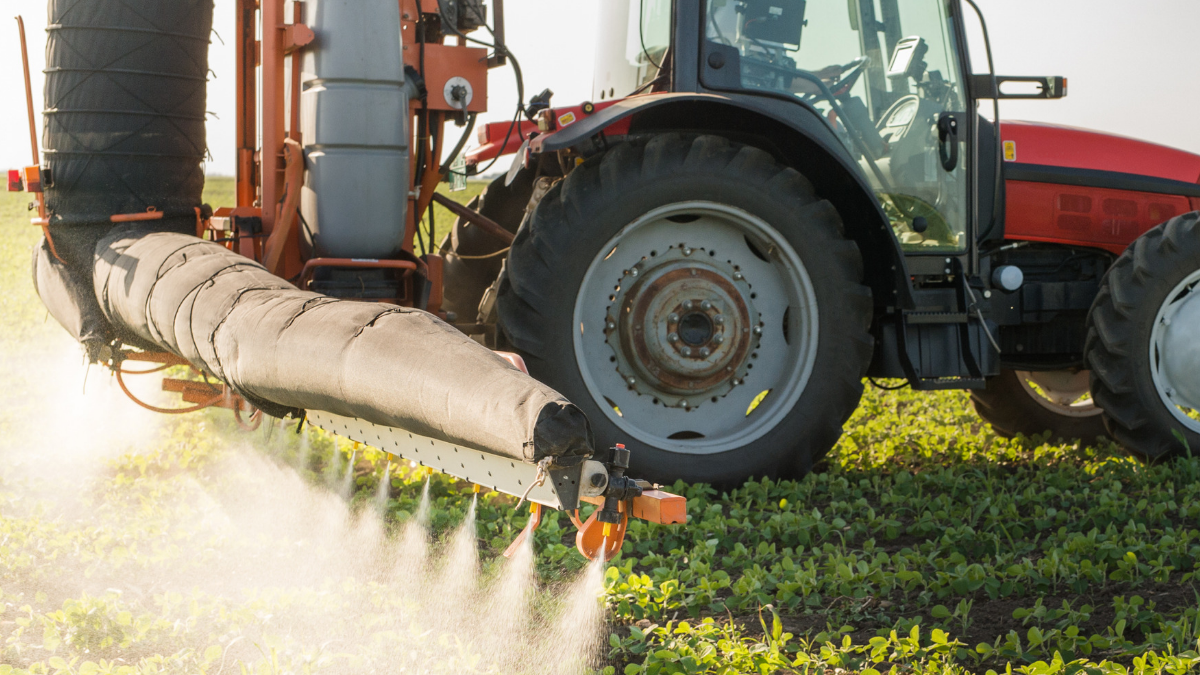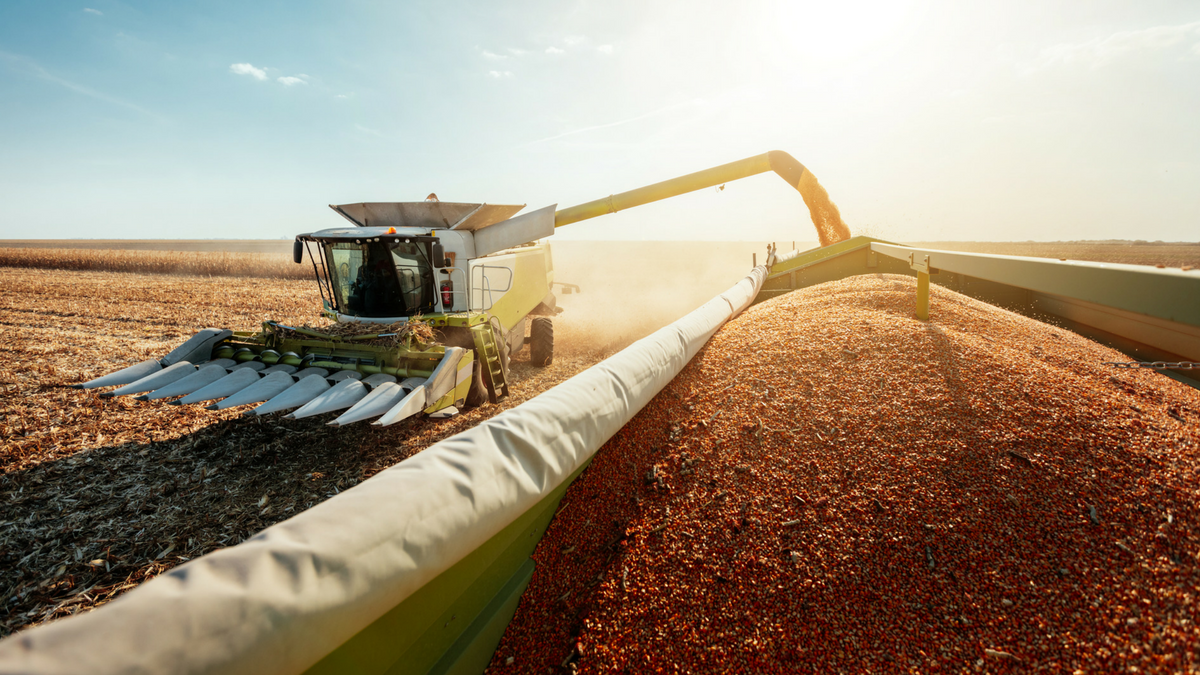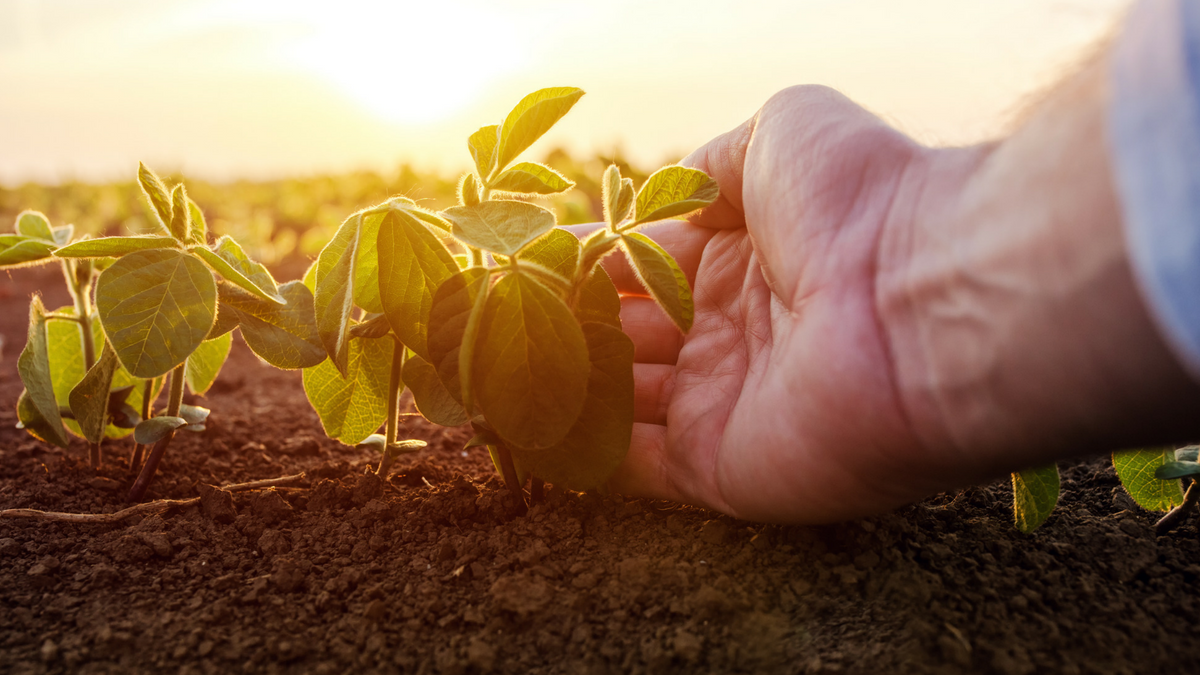The following is an edited transcript of Tom Martin's interview with John Power. Click below to hear the full interview:
Tom: Digital innovations are being harnessed to address growing global demand for food and agriculture's diminishing labor force. Joining us for a look at how technology is transforming agriculture is John Power, president of LSC International, Inc., a Chicago-based firm advising corporate and financial participants in the global agri-food chain. Thanks for being with us, John.
John: Thank you.
Tom: How important to the future of farming are advanced technologies such as automation and artificial intelligence?
John: This is essentially a new era of agriculture. It's comparable to mechanization and chemical use in agriculture. It's basically the next new wave.
Tom: Historically, agriculture has been an industry that was subject to a lot of innovation and technological maturation over the years, hasn't it?
John: Yes. Agriculture has definitely been on the leading edge of innovation. Really, it goes back 10,000 years to the original farmers, who selected different varieties and made different seeds and saved superior seeds.
Tom: To bring this up for the here-and-now, how are advances in autonomous technology, machine learning and data analytics changing the way farmers farm?
John: These technologies have just been introduced, and so, we're at the early phases of the change. The most adopted technology is auto-steer, which is the GPS system that essentially guides the tractor. The farmer is in the cab but, in fact, it's more like his office, because the farmer is most likely going to be on the phone or on his iPad. Essentially, it enables the farmer to accomplish a lot more. That's the most adopted [technology].
On the data side, we are seeing a lot of new technologies, and these are being adopted. For example, an interesting technology is aerial image technology, and that's being introduced now and would be very effective.
Tom: Is digital farming proving to be economical and scalable?
John: We're still at the innovator stage. Our studies would indicate that the innovators are finding it economical. However, there are significant challenges, because this is not the easiest technology to adopt. A key issue is how it can be made as user-friendly as possible.
Tom: There has been this explosion of new technologies and insights all across the cultivation cycle, and there are predictions of huge growth within the next five years in intelligent agricultural technologies. What existing digital innovations currently make your short list, if you will, as the most significant and impactful [for] farming?
John: I’d just like to start by saying that it's well worth remembering the quote from Bill Gates in talking about technology and technology adoption. Basically, Gates says that we always overestimate what will be accomplished in two years and underestimate what will be accomplished in ten years. There's an additional factor in agriculture, which is the seasonality.
You really have only one cycle per year, and that is very different from most other areas of technology, where you have many cycles per year. In terms of the technologies that we see that are most interesting, it's around the analytics of the data and being able to deliver to the farmer data so that the farmer can take action. That's really where the cutting edge is.
Tom: The analysis of that data is still quite a challenge, correct?
John: Well, actually, there's a challenge before that, which is the quality of the data. One of the biggest challenges is having quality data. That's the first step. Then, if you have quality data, the analytics actually can be handled using artificial intelligence — machine learning and technologies like that. On the analytics side, that's been automated.
Tom: An interesting term that has come up around here that's a little bit controversial among farmers is “armchair farming” — the idea that we might arrive there someday. Even those going into farming in the future may come out of other disciplines in terms of their higher education.
John: Well, actually, yesterday, when I presented at [ONE: The Alltech Ideas Conference], I did use the video from John Deere, which basically presents what you might call “armchair farming.” I prefer the term “mission control.” Basically, it's putting the farmer in a position where the farmer can see what is happening across the farm and [can] then make decisions and implement actions. This can actually be done at the farmer's house or in the cab. But I think, in the future, we will have, essentially, “mission control” for farming.
Tom: Which farm equipment brands are your ones to watch for cutting-edge innovation?
John: Well, I think all of the leading companies are making very significant efforts in this area. The thing that I would most look out for are the startup companies — they are in a position where they can move more quickly. There’s an aerial analytics company called IntelinAir. They are doing amazing analytics with the aerial imagery, for example.
Another company that is getting a lot of attention in the retail space is Farmer's Business Network (FBN). They're really innovating how business is done — it's more like a business model innovation than a technology innovation.
Tom: What ag-tech challenges need to be addressed and overcome?
John: The principal challenge that we've identified — and this is work that we did over the last several years — is how to show the value to the farmer. Basically, what we have is many technologies, and they're all being presented to the farmer at basically the same time. It's very difficult for the farmer to determine which really has value. The most important question is the value question. Everybody, of course, says they will increase yields and reduce cost, but we also feel that time is a huge factor.
If it makes the farmer's activity and life more complicated and basically demands more time, that's not a positive. You want to be able to deliver so the farmer has more effective use of their time, which is actually their most critical resource.
The other element is quality of life. Basically, what we see is — for example, going back to autosteer, that means that the farmer can come home in the evening and the farmer is not completely exhausted. That, basically, it's like being at the office for the day, rather than driving the tractor and all the hard work associated with that before the automation.
Tom: They say that technology often leads regulation. Do you see the emergence of new regulatory policy relating to precision agriculture?
John: Well, the area that might be applicable to regulation is in relation to the data — essentially, issues around privacy ownership of data. At this stage, it's essentially a voluntary system. Many companies have adopted positions in agreement with the farmer organizations on how to approach the issues of data ownership and privacy. I don't think there's so much discussion. A few years ago, there was a lot of discussion about this; now, it seems to be less of a point of discussion.
Tom: There has been a steady decline in available farm labor in the U.S. and other countries, and some farmers are looking to robotics and even artificial intelligence to adapt and to fill the void. How far along are technologies in replacing human labor?
John: We’re really seeing equipment being developed and changes in how the crop is grown that will facilitate automation. Certainly, there will be a lot more automation. This has significant impacts because it really means you will have a different type of labor on the farm. Many of the physical tasks will be automated, but then there are going to have to be people on the farm who can manage the equipment and support the equipment.
Tom: I've read that what's needed first and foremost is an integrated digital platform — a digital ecosystem that automates and pulls in and makes sense of massive amounts of data and does a lot of what you're talking about. Are you aware of anything coming close to this?
John: Well, actually, it’s interesting because this is a key issue, as I see it. Basically, there will be a platform in agriculture — my work is mostly on the crop side; I haven't done that much work on the animal side — but right now, essentially, Climate Corporation — the Monsanto Company — and John Deere are the two emerging platforms. Essentially, farmers need a platform, and ultimately, one or two of these platforms will dominate.
Tom: This is a holistic software, or whatever, that brings it all together.
John: This would be a platform that is basically like a Bloomberg Terminal, in a sense. For the trader, they basically work off the Bloomberg Terminal. Conceptually, farmers would have the equivalent of a Bloomberg Terminal, so they don't need to go from one place to another; everything will be presented to them on the single platform.
Tom: Do you think that the startups that you've mentioned and others that are developing these technologies need to be thinking in those terms, about how their product was going to integrate with that platform?
John: Yeah. The platforms actually are integrating through APIs, the startups. There are different approaches on that, but basically, they want to get the startups on their platforms.
Tom: True. True. Which key market trends do you follow most, do you keep your eye on? What are they indicating for the future of farming?
John: Well, I think that the major trends in farming are around the commodity prices. Given the current level of prices, it's difficult. That's one. Then another major trend is consolidation at all levels. I think that these technologies are likely to support this in two directions. One is what we might call the “large-scale farming operations.” These will grow bigger. But we'll also see smaller, highly-focused operations serving local markets, and that will be facilitated by the digital technologies also. That'd be two different things, but both areas will benefit.
Tom: John Power, president of LSC International of Chicago. Thank you for being with us.
John: Thank you.
John Power presented at ONE: The Alltech Ideas Conference (ONE18). The conference returns May, 2019, to continue the exploration of meaningful ideas that change our lives and the world around us. Learn more here.























